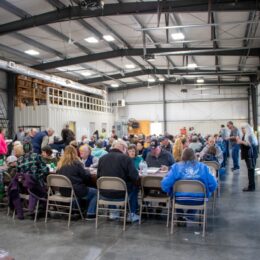Emerging technologies for outdoor lighting are coming in the form of new controls and networking capabilities. More on that shortly, but first, here is a quick recap of the lighting family tree.
All electric light sources have a common ancestor — Thomas Edison’s incandescent bulb. Most of us think of the incandescent bulb as strictly residential in application, but in the beginning, it was all we had to work with. As a result, incandescent bulbs of various sizes were used for outdoor lighting. Unfortunately, incandescent bulbs have a relatively short life, and early versions had a relatively weak output. Still, any light on previously dark streets was an improvement.
As interest in energy conservation began to take hold, new bulbs surfaced, including high-pressure sodium (HPS) lamps and compact fluorescent (CFL) bulbs.
Today, light-emitting diode (LED) light sources shine in the spotlight. These light sources have a number of advantages:
- LEDs use less energy. Replacing an HPS light with an LED alternative delivers an immediate 50 percent increase in energy savings.
- The color of light produced is much more appealing and can be tuned if desired.
- Light from an LED source is easily focused to eliminate light pollution.
- LED sources have longer life spans.
- LED sources are much more durable since there are no filaments or electrodes to be damaged.
As mentioned in the beginning of this article, the next technological advances in outdoor lighting are coming in the areas of control and networking. Control of outdoor lights today is pretty rudimentary and focused solely on turning them on and off at particular times or in response to motion.
LEDs are electronic devices and lend themselves especially well to control and networking strategies. What might be the capabilities garnered from advanced control and networking of outdoor LED lights?
Ever notice that some street lights seem to be out for a long time? With a networked system, the light itself can tell system operators it needs changing (if already out) or if it will soon need changing, resulting in improved maintenance. When changed before or shortly after the light fails, the effectiveness of the system and people’s satisfaction are greatly improved.
Varying the light output on a time or event basis can save energy and improve safety and security. Examples include reducing output when fewer people are spending time outdoors, increasing output during outdoor events and creating a “light path” for emergency responders to and from the site.
Color output can be tuned for special events or to meet specific needs and requests.
Outdoor lighting is an essential aspect of modern life. Well-lit streets are safer for drivers and pedestrians, a deterrent to criminal activity and add to the overall image of a town, neighborhood or home.
The quest for energy savings, improved light quality and reduced maintenance costs has driven the evolution of outdoor lighting. Is the LED the end of the lighting family tree? Not likely. But for now, the next big thing will be the application of control and networking technologies to gain additional benefits from the highly efficient LED.
When you are in the market for a new outdoor area light, consider contacting Orange County REMC. We can help you choose the best lighting option for your home, and it may eventually come with an app. You can also save by purchasing energy-efficient bulbs at our online store at www.myremc.coop. Now that’s a bright idea!
Mark Belcher
Member Services Manager




